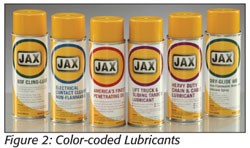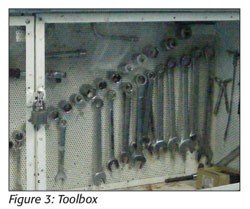In this article, we discuss the necessary paperwork in a maintenance department. Having procedures helps with employees training. Although you may have a qualified artisan, food industry experience can be lacking and therefore important aspects should be specified. A tip – use pictures if you can.
Maintenance Procedures
It has been said that “If it is not written down, it never happened.” Therefore, it is absolutely imperative that the maintenance program include procedures that describe how to do the work and properly document that the work is being done and being done properly. The maintenance master list would be only one document in the program. The following procedures would be considered integral parts of a documented maintenance program:
• Maintenance procedures
• Lubrication procedures
• Tool reconciliation procedures
• Procedures for temporary repairs
• Procedures for emergency repairs
• Spare parts inventory program
• Training procedures
• “Hand-over” procedures
• Audit procedures to verify that the work is being done properly
Let’s look at how these protocols should be drafted. Food processors should establish a standard for drafting, reviewing and approving procedures. These should include a title, step-by-step actions to complete the work, who is responsible for the work, how and where records shall be maintained (references to the appropriate form or forms), corrective actions to be carried out and, finally, procedures for management to verify that the work was not only done, but done properly. When developing preventive maintenance procedures, the company should draw on the manuals provided by the equipment manu-facturers, the risk assessments they have conducted and their own experiences. In most cases, equipment manuals are far too detailed and bulky for everyday use, so procedures need to be streamlined.
Lubrication is always a hot button issue during third-party audits. The lubrication procedures should describe not only how and when to lubricate, but should specify the type and amount of lubricant. Ideally, the lubrication records should capture all of this information. The lubrication program should also include procedures describing how food- and nonfood-grade lubricants are identified to ensure that the proper material is used. Processors are now color-coding lubricants and/or the grease guns used to apply them. Since this is an important issue, suppliers of lubricants have stepped forward to help ensure better control of lubricants. Some vendors now sell color-coded lubricants (Figure 2).

The best way to describe tool and parts reconciliation is to look at the medical profession. One of the things done during surgeries is to ensure that all tools present at the start of the operation are there when the work is done. One doesn’t want to leave something in the patient, which does happen. There are different ways to ensure tools are reconciled.
One is to set up a tool cabinet in the area of the machinery being maintained, with a location for each tool (Figure 3). If a tool is missing from the cabinet after a project, it must be accounted for. When using a system such as this, companies assign keys to selected individuals, which both controls access and defines who is responsible for tool reconciliation. Another means to reconcile tools is to have the maintenance people supply their own tools. They are more prone to keep an eye on their own property. Many companies do this. An integral part of such programs is to provide the maintenance people with a tool allowance to ensure they have what they need. Finally, an outfit can use a checklist like surgeons do. What goes into the plant must be accounted for when the work is completed.

All companies must establish a procedure for temporary repairs, which use many different materials. These include tape of various types, string, wire, twist-ties and cardboard. None of these items is considered proper material for doing repairs. In fact, there is a good chance that they could cause product contamination. If one or more of these items are used, the repair should truly be temporary, that is, less that a 24-hour fix, and preferably only one shift. The fix should be dated and be properly repaired as soon as possible. Of course, the best course is not to use any of these items and simply fix the problem immediately.
The maintenance program should also include spare parts. All processors need to maintain a spare parts inventory to keep the plant running smoothly. However, it is impossible to keep a backup for every single unit in a plant. There are cost, space and management issues. This is another situation where risk assessment can be used effectively. Processors need to understand the potential risks of being down because of a part or equipment failure. For example, is it worth maintaining a unit with a temporary fix if the instrument or part can be delivered within a few hours?
Processors should also establish a hand-over procedure. Whenever repairs are made, quality should look over the unit in question to ensure that it is clean, the work has been done properly and the unit is ready to go. Quality must then sign off on the repairs prior to restarting production operations.
To ensure everything is done properly, everyone involved in the program needs to be trained on procedures. Training should be based on established protocols and fully documented.
Finally, the company needs to establish internal audit protocols to verify that each of the procedures is being done properly and is documented.
About the Author
Richard F. Stier
Article reproduced with permission from Food Safety Magazine Source: Food Safety Magazine
http://www.foodsafetymagazine.com/magazine-archive1/april-may-2012/preventive-maintenance-an-essential-prerequisite-for-food-safety/





